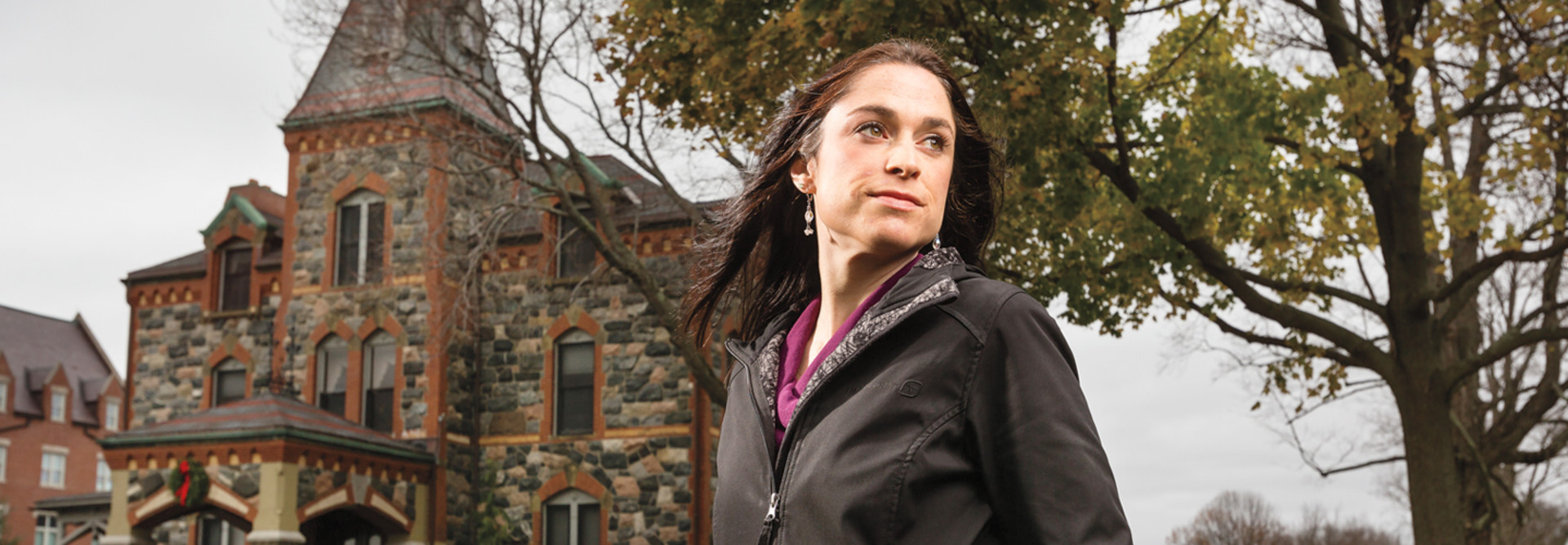Q&A with Paperless Classroom Innovator Kerry Gallagher
As a digital learning specialist, Kerry Gallagher looks for ways for teachers and students to use technology more collaboratively.
Students scour the Internet for information daily. Digital Learning Specialist Kerry Gallagher says it’s now part of her job to show students how to better leverage the web to collaborate on projects and share ideas. A former middle and high school history teacher, Gallagher made the full leap into digital learning technology at St. John’s Preparatory in Danvers, Mass.
A frequent blogger and educational technology advocate, she was recently recognized as a 2015 PBS LearningMedia Digital Innovator.
Gallagher spoke with EdTech Executive Editor Tara E. Buck about the paperless classroom concept and how she incorporates paperless learning and instruction within her school.
EDTECH: What does the paperless classroom concept mean to you, and how has it evolved as part of your educational technology philosophy?
GALLAGHER: I am a digital learning specialist at a sixth through 12th-grade, one-to-one tablet school. My primary role is to work with the other digital learning specialist to coach teachers as they plan units and lessons and establish their workflow. My goal is to help them use the technology that’s available in a way that benefits the learning process and isn’t a mere substitution for paper or for the way we have traditionally taught. We don’t want to just transmit information for students to receive. Our job, now, is to coach students to use the technology so they are collaborating more actively, as creators of materials and not just consumers of information.
EDTECH: How did you get into the field of educational technology?
GALLAGHER: I taught middle and high school history for about 13 years and became interested in educational technology through my own classroom practice. When I was a first-year teacher, I had one computer in the classroom and a chalkboard. That was it. And I had a very old desktop computer at home in my apartment. Soon, more computer labs opened for me to sign out so my students would have access to the Internet to do research.
What I found was that the Internet wasn’t just a place where my students could access information; it was a place where they could go to use some of the tools available online to build their own projects or produce their own videos. As soon as we figured out that technology was a new way for them to work together and demonstrate what they had learned, I got really excited about how my class wasn’t just a place for them to take notes, study, and take a test. Instead, my class was a place where they were working together, learning, creating, building and then sharing.
EDTECH: What are some of the roadblocks to having a great classroom where children and teachers have both technology and creative freedom?
GALLAGHER: The most common roadblock is lack of access. Teachers and students need access to devices and sufficient infrastructure so that Wi-Fi is reliable and consistent. The other roadblock occurs when school administrators or technology departments put up excessive firewalls or block websites such as YouTube. When too much is blocked, teachers and students are unable to get to important resources and tools. I have found that, over time, people understand that overcensoring the Internet doesn’t teach our students to be good digital citizens. We should be teaching our students digital citizenship skills in school so they are ready to navigate the online world themselves as young adults.
EDTECH: How has your paperless classroom concept evolved?
GALLAGHER: It started when I was sick of our textbooks. I found the information did not have the depth that I was looking for, and the activities were just not very interesting for me or my students. I was always tweaking them and changing them. Eventually I decided it wasn’t even worthwhile to sign my students up for the online version just to save them from carrying the huge books back and forth. I was going online and finding high-quality Open Educational Resources, or OERs. I wanted to challenge myself to go almost a year without a textbook. Perhaps my students and I would be more creative because we would have to look beyond the traditional structures in a textbook.
The results were pretty incredible. I wasn’t completely paperless that first year, but I ended up using excerpts from lots of different sources, not just textbook sources. We used more scholarly work, more primary sources of all kinds, such as artwork, photos, and texts. We used more films and documentaries. For my students, it was a more engaging way to learn because when they were interacting with the information, they were still reading, but also listening, watching, and annotating many types of media.
Therefore, when I assessed their learning, we were no longer limited to posters, essays, and tests; since they had learned through media, it only made sense for them to demonstrate their learning by producing their own creative rich media.
EDTECH: What’s next for the paperless classroom model?
GALLAGHER: Although they’ve been around for a long time, OERs have gotten a big boost very recently. We are going to see more teachers moving away from traditional textbooks and e-texts because there will be so many more high-quality resources available to them online. There will be increased adoption of the paperless creative model as a result.









